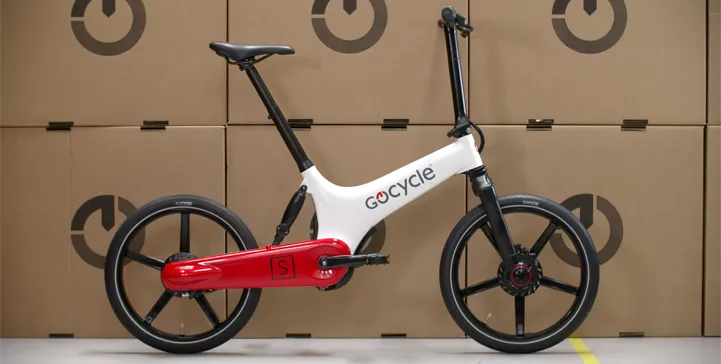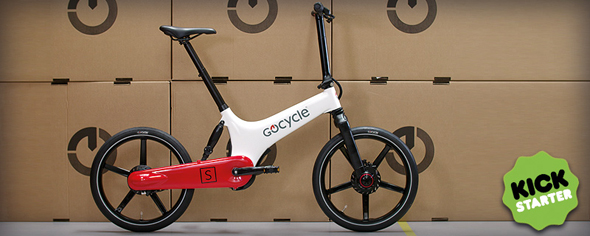


How do you raise $450K in just one month?
Read the story behind our first ever Kickstarter marketing campaign and discover our tips for smashing your funding targets.

How do you raise $450K in just one month?
That wasn’t the exact challenge Gocycle came to us with, but was just one of the eye-popping numbers in a Kickstarter campaign that exceeded all expectations.
Gocycle – and their owner, ex-McLaren cars engineer Richard Thorpe – design and manufacture award-winning electric bikes, available through an exclusive network of global resellers and stockists. While Gocycle and the ebike market in general are well established in Europe, North America has proved a tough market to crack.
As part of their plan to change this, they designed a prototype for a stripped back, lower-priced Gocycle, the GS, and decided the best way to bring it to market in the US and Canada was through Kickstarter, the world’s largest crowd-funding site.

So where did Pull come in? Our challenge was to design and execute a digital marketing campaign to help Gocycle’s Kickstarter raise $250,000 in 5 weeks to fund the GS build.
It was clear that the best platforms for reaching our audience would be the social networks and Google, so using our knowledge of Gocycle, the ebike market and Kickstarter we devised some key personas to target and which platforms we’d be able to reach them on.
The messaging was also key to our strategy. There’s a great story behind Gocycle, it looks awesome and does some seriously cool stuff, but whichever way we cut it there was no escaping the fact that we had to lead with the low price and massive saving that Kickstarter backers would get - especially the early-bird reward with its 40% saving! The secondary message would focus on the length of campaign – this fantastic price wasn’t going to be around for long.

How the campaign went
From day one we were seeing large volumes of traffic coming through to the Kickstarter page and plenty of pledges were rolling in. By the end of the first week we’d been afforded ‘Project We Love’ status by Kickstarter, and had soon broken through the $100,000 barrier – something only 1% of all Kickstarter projects manage to do.
The milestones kept falling and as the campaign progressed it was clear we had a runaway hit on our hands. With the project exceeding all expectations, after two weeks Gocycle took the decision to open the project up to a global audience.
That’s good, right? Of course, but now the pressure was on us in the Digital Marketing team as we had to react quickly, testing and adapting their messaging, targeting and budgets for the new global audience as the campaign clock ticked down.
With 13 days to go before the end of the project, we reached the $250K target, but this didn’t mean we could relax – new stretch goals (new rewards for backers if new targets are hit) were announced meaning more changes to the campaign, new channels to use and more money to raise.
The results
When the curtain finally came down on the campaign, the end results made for some truly impressive reading.

$456k raised. 182% funded. 182 backers. In short, a hugely successful campaign, but there were some other stand-out numbers. Our digital advertising efforts reached 10.76 million people, sending just under 250,000 visits to the Gocycle GS Kickstarter page. There were other benefits too. Gocycle’s Facebook following increased by 67%, and what was once a largely UK fanbase became truly global.
What did we learn from our first foray into Kickstarter?
As marketers, we spend much of our time trying to keep things simple, but had to do the exact opposite for Kickstarter. When you’re asking people to invest in something that doesn’t yet exist, they want as much detail as possible.
Be very present on the Kickstarter community. Never underestimate the value of conversation. Backers like to talk to the creator and to find out what the product can do. It is in here where the conversion rates sky rocket.
Plan out who your target market is before you start this journey so that you can focus your efforts and budgets on the right channels, but be flexible. Adapt your messaging as you go along to keep backers informed and to show a sense of urgency to those who are hesitating in backing your project.
Posted 7 November 2016 by Ben Waterhouse